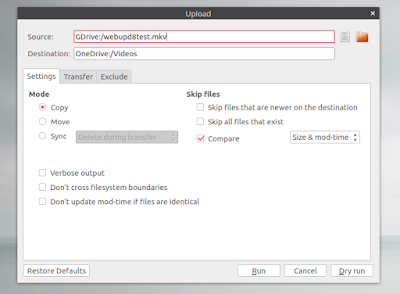

Rsync is a command-line tool that is usually installed on Linux and macOS by default, and it's available for Windows if you install Cygwin (opens in new tab). Rclone is based on Rsync (opens in new tab), which has been around since 1996.

macOS can automatically back up to multiple Time Machine destinations if they’re connected at once, but it will also catch up destinations that you plug back in after they’re removed. That can avoid you worrying about the drive being stolen or examined when you’re not around. I recommend using disk encryption for backup drives (Control-click the drive and choose the Encryption item), because at rest a macOS-encrypted volume is extremely secure. You can wind up with a compounded problem: If your Time Machine volume contains other data besides the Time Machine container, some of the cloud archiving services won’t back up that non-Time Machine data! (This column was prompted by a reader who hit that issue with Backblaze.)

If you have caps or throttles on your broadband data upload, Time Machine backups can easily push you over, too, for this reason. However, CrashPlan’s archive grew to 303.5GB. Over a week, that Mac’s Time Machine backup reached 63GB. (This also makes it difficult to copy a Time Machine backup from one volume to another without bloating the size.)Ĭode42 tested how quickly Time Machine archives grew with a 53GB volume on a Mac. If you back up files from that volume using file-based archiving software, hard links are copied each time they appear. It’s clever, but it only works within a single volume. These hard links can appear multiple times in a volume, but all refer to a single file.
That omits making a fresh copy of any file that remains the same between those bakcups. The primary issue is that Time Machine uses a special kind of alias, called a hard link, to create complete snapshots for each point in time that a backup operation happens. The issue with Time Machine and onlne backup


 0 kommentar(er)
0 kommentar(er)
